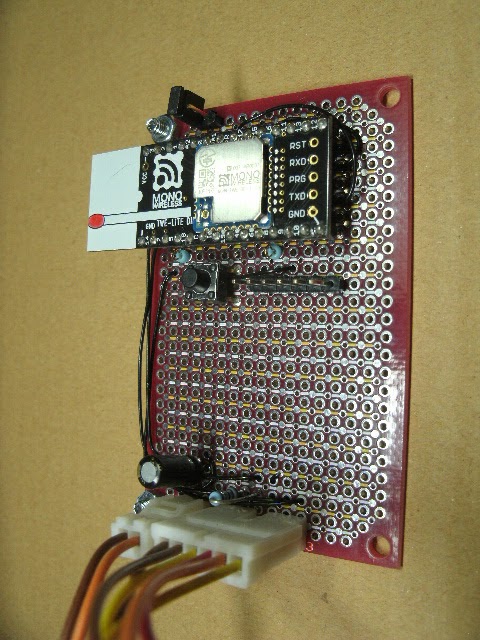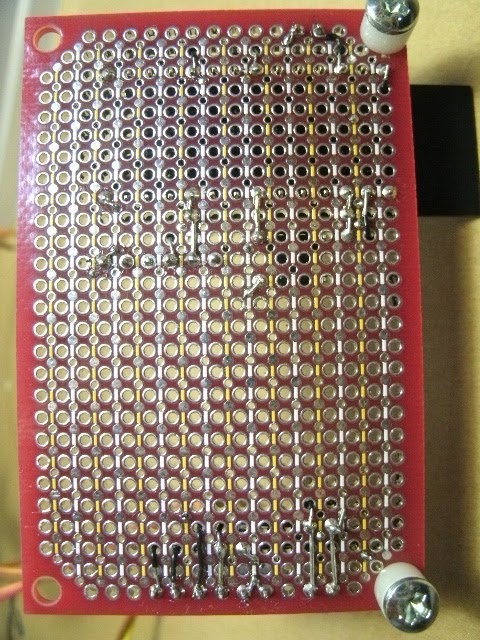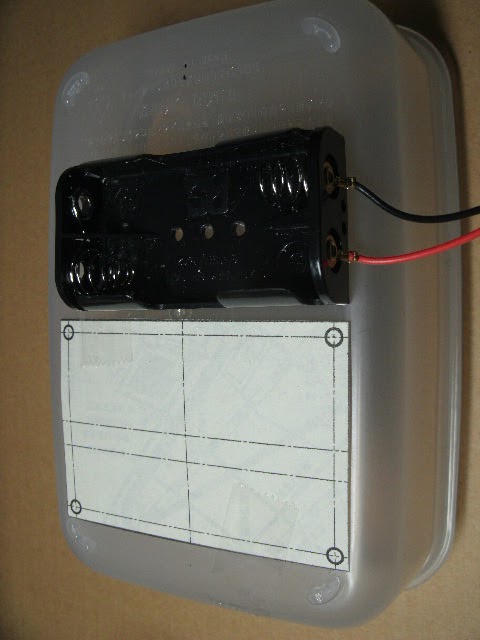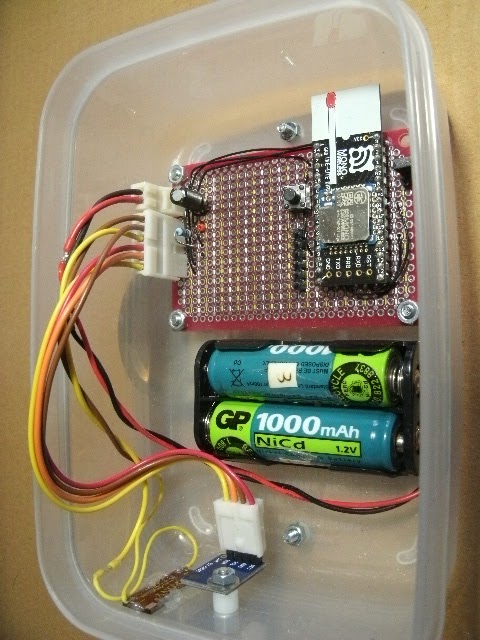Tweet
Summary
If you adopt wirless module TWE and make the simple circuit, you can monitor illuminance by mobile phone. App Slip21 programmed by ENOKI records the measurement history.
Motive
An introduction for building DIY wireless illuminometer on a universal board by wiring within a one-coin box.
要約
ワイヤレスモジュール TWE を採用し簡単な半田付けをすれば,スマホで照度を出先で監視できます。その測定履歴を Slip21 が記録します。
経緯目的
TWE を用いたワイヤレス照度計の簡単作製法。トップページからの再掲記事です。
Building DIY wireless illuminometer ワイヤレス照度計の簡単製作法
I publish DIY wireless illuminometer that consists of TWE-Lite module and I2C illuminance sensor. The illuminometer is easy to build, and I describe how to DIY. It works all day long.




I built all the parts of the sensor in transparent PP 500 mL box available at one-coin shop. 3.6mm diameter drill worked holes through threads by drilling machine. I always the printed pattern paper to fix precise board hole pitch. I drew the pattern by CAD. I also worked a hole to fix I2C illuminance TSL2561 module at the side of the box. Photo9 shows the fastened parts that contains the wired board, the battery holder, the illuminance module by M3 screws. The photo cell was fixed by hot melt plastic rod.
The assembled board is shown in Photo6. The assembly is wired on type C Akizuki's universal board AE-03 by soldering.
How to assemble wireless sensor board
TWE supports wireless tag app which is easier than XBee to apply for I2C sensor. I have measured temperature by analog semiconductor sensor, while I2C temperature sensors have little errors than analog ones, as I2C sensors are digital signal. I confirmed that the analog temperature sensors have accuracy by simple insulator box with high precision I2C HDC1000 sensor. With I2C temperature sensors, We will not have to correct analog sensors or do confirmation test with reference.
Slip21 works for XBee with analog temperature sensors or TWE with I2C sensor. XBee and the analog sensors are supplied with regulated DC/DC converter. And the XBee module needs 2 ICs. Another TWE-Lite module works without other ICs. It connects with I2C sensor direct. The circuit is very simple. You can wire on bread board without soldering or universal board by soldering wires.
You may use DIP IC socket for TWE-Lite to replace or write firmware, though I soldered it and 6P header to write firmware by TTL-232R-3V3 cable. Refer to the uploaded board circuit.
ワイヤレスセンサ基板組み立て
Slip21 は電波法の審査をクリアしているワイヤレスモジュール XBee もしくは TWE-Lite を用います。どちらも, 電池駆動による長期間のワイヤレス通信を実現するために スリープ間欠動作します。TWE-Lite の無線タグアプリ Tag_App は I2C 対応のセンサに標準対応しており非常に便利です。従来のアナログセンサの場合,正確に測定しようと思えば,それなりに 校正とか補正をしなければなりませんでした。I2C センサは微小なマイコンが組み込まれていて本体の無線モジュールとはデジタル信号のインタフェースになります。アナログセンサを駆動するには 定電圧が必要になり,XBee モジュールの場合,DC/DC コンバータを搭載し,さらに他の信号処理ICも必要になります。その点,TWE-Lite の場合,I2C センサと直結が可能で電子部品数が半減して, 配線が簡単に済みます。さらに信頼性も向上するかもしれません。
TWE-Lite を用いた基板の組立について説明します。回路は非常に簡単なので,少数の基板であれば,印刷された専用基板 PWB (PCB) を製作する必要はないでしょう。汎用のユニバーサル印刷基板 に配線を半田付けするか,もしくはブレッドボードを用いれば半田付けの必要がなくなります。
Biwa Lake JAPAN © Enoki 2017 August 28